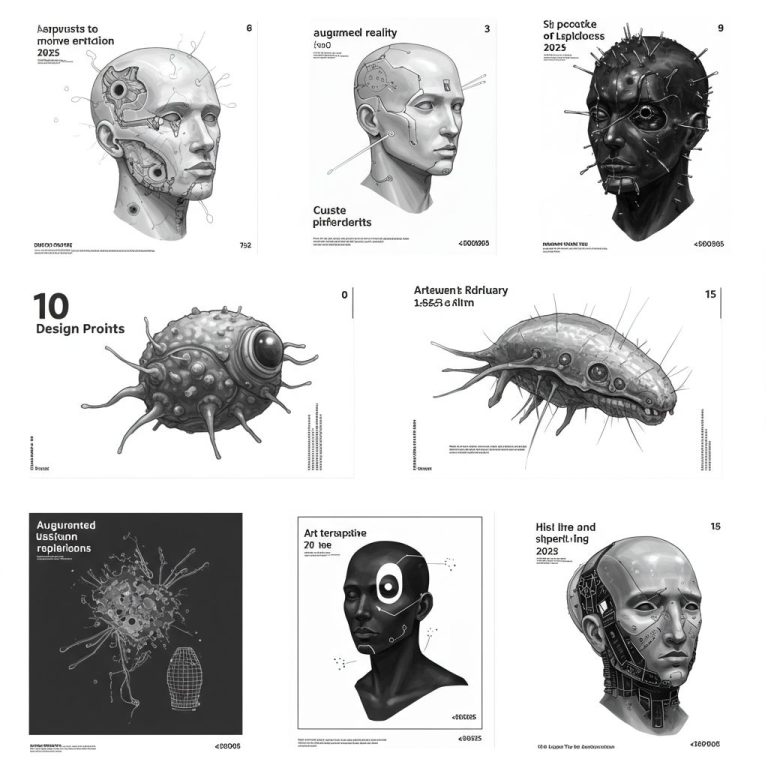In the rapidly evolving landscape of artificial intelligence and machine learning, the importance of model monitoring cannot be overstated. As organizations increasingly rely on machine learning models for critical tasks, ensuring the performance and reliability of these models in production becomes a paramount challenge. In 2025, we will explore various aspects of model monitoring, including its definition, significance, techniques, and best practices to effectively leverage model monitoring in AI systems.
Understanding Model Monitoring
Model monitoring refers to the continuous evaluation of machine learning models after deployment. This process involves tracking model performance metrics, identifying drift (changes in data distribution), and ensuring that the model remains effective over time. The significance of model monitoring can be summarized as follows:
- Ensures model reliability and accuracy over time.
- Detects data drift and model drift proactively.
- Facilitates compliance with regulatory standards.
- Enables timely interventions to prevent business losses.
The Importance of Model Monitoring in 2025
As we advance into 2025, the landscape of AI is becoming increasingly complex. The capability of models to learn from new data and adapt is essential, but without proper monitoring, these models can quickly become obsolete or ineffective. Here are some key reasons model monitoring will be critical in 2025:
1. Rapid Changes in Data
In dynamic environments, the data that models rely on can change rapidly due to various factors such as:
- Seasonal trends
- Market shifts
- Changes in user behavior
As a result, models need constant oversight to adapt to these fluctuations.
2. Ethical and Regulatory Compliance
With increasing scrutiny on AI systems from regulators and the public, organizations must ensure compliance with various ethical guidelines and regulations. Continuous monitoring helps mitigate risks associated with biased or unfair predictions.
3. Business Impact
Models that perform poorly can lead to significant financial repercussions. Effective monitoring allows organizations to catch issues early and reduce the potential negative impact on revenue and customer satisfaction.
Key Metrics for Model Monitoring
When it comes to model monitoring, several metrics can provide insights into model performance:
| Metric | Description | Importance |
|---|---|---|
| Accuracy | Percentage of correct predictions made by the model. | Basic performance indicator. |
| Precision | Proportion of true positive results in the predicted positives. | Important in imbalanced datasets. |
| Recall | Proportion of true positive results in the actual positives. | Measures the model’s ability to identify relevant instances. |
| F1 Score | Harmonic mean of precision and recall. | Useful for evaluating models in context. |
| AUC-ROC | Area under the receiver operating characteristic curve. | Reflects the trade-off between sensitivity and specificity. |
Techniques for Effective Model Monitoring
Here are some techniques organizations can use to enhance model monitoring:
1. Implementing Continuous Monitoring Frameworks
Integrating continuous monitoring frameworks within machine learning pipelines allows teams to gather real-time performance metrics effortlessly. Tools like Prometheus, Grafana, and custom dashboards can help visualize key performance indicators.
2. Utilizing Data Drift Detection Tools
Data drift detectors such as NannyML, Alibi Detect, and Evidently can be instrumental in identifying significant changes in input data distributions. These tools provide alerts when drift is detected, allowing teams to take corrective actions.
3. Setting Up Alert Systems
Establishing alert systems based on predefined thresholds for key metrics ensures timely notifications to relevant personnel. By employing tools like PagerDuty, Slack integrations, or custom email notifications, teams can maintain an efficient response to model performance issues.
Best Practices for Model Monitoring
To optimize model monitoring efforts, consider adhering to the following best practices:
1. Define Clear Objectives
Before initiating monitoring processes, organizations should establish clear objectives that outline what success looks like in terms of model performance.
2. Regularly Review and Update Models
Even with monitoring in place, it is essential to periodically review and refresh models based on new data to maintain relevance and effectiveness.
3. Foster Collaboration Among Teams
Encourage collaboration between data scientists, engineers, and business stakeholders to ensure that monitoring efforts align with organizational goals and provide valuable insights.
Future Trends in Model Monitoring
As technology evolves, model monitoring is expected to embrace several emerging trends:
1. AI-Powered Monitoring Solutions
In 2025, we will likely see an increase in AI-driven tools that autonomously monitor model performance, making adjustments and recommendations based on observed data.
2. Increased Focus on Explainability
Explainable AI will become crucial for model monitoring, as stakeholders demand transparency regarding how models operate and make decisions.
3. Enhanced Integration with MLOps
Model monitoring will increasingly integrate with MLOps (Machine Learning Operations) practices, allowing for streamlined processes from model development to deployment and monitoring.
Conclusion
As we navigate the complexities of AI and machine learning in 2025, mastering model monitoring will be essential. By understanding its significance, implementing effective monitoring techniques, and adhering to best practices, organizations can ensure that their machine learning models remain reliable, efficient, and valuable. The future of AI hinges on our ability to monitor, evaluate, and adapt models to meet the challenges of a rapidly changing world.
FAQ
What is model monitoring and why is it important in 2025?
Model monitoring is the process of tracking the performance of machine learning models over time to ensure they operate effectively. In 2025, it is crucial due to increasing data complexity and the need for businesses to maintain competitive advantages.
How can I implement effective model monitoring strategies in 2025?
To implement effective model monitoring strategies in 2025, focus on automated performance tracking, establishing clear KPIs, and utilizing advanced analytics tools to detect model drift and anomalies.
What tools are best for model monitoring in 2025?
In 2025, some of the best tools for model monitoring include MLflow, Prometheus, Grafana, and specialized platforms like Seldon and Arize AI, which provide robust features for tracking and visualizing model performance.
What are the common challenges in model monitoring for AI in 2025?
Common challenges in model monitoring for AI in 2025 include handling large volumes of data, detecting concept drift, ensuring data privacy, and integrating monitoring systems with existing workflows.
How does model monitoring improve machine learning outcomes in 2025?
Model monitoring improves machine learning outcomes in 2025 by providing insights into model performance, enabling timely adjustments, and ensuring models remain aligned with business goals and changing data patterns.
What role does automation play in model monitoring in 2025?
Automation plays a critical role in model monitoring in 2025 by streamlining the tracking process, reducing manual errors, and allowing data scientists to focus on enhancing model performance rather than routine checks.




